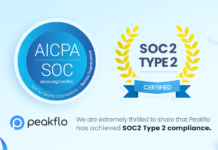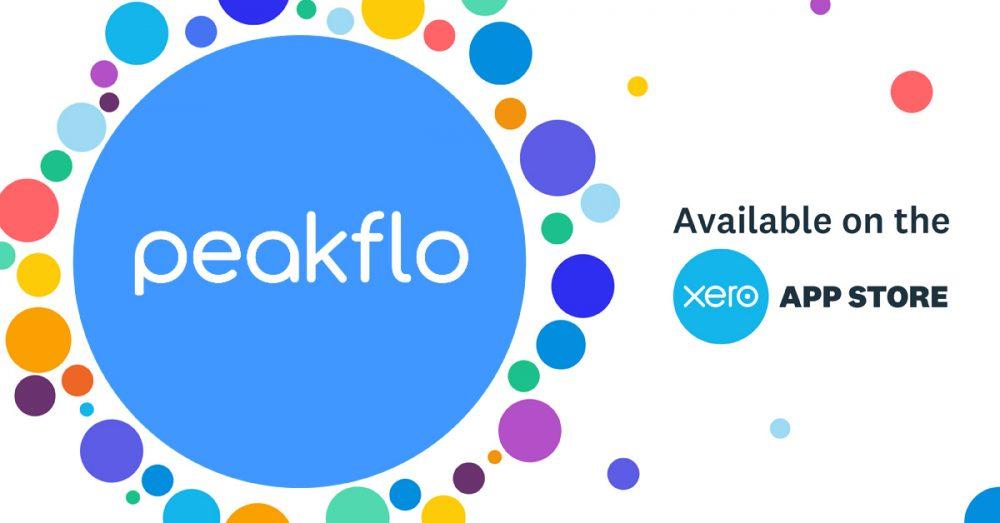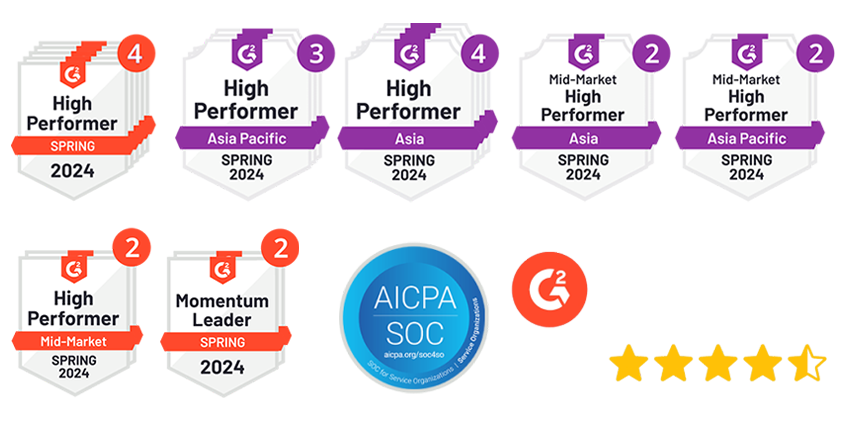Debt collection can be a headache for businesses dealing with outdated call systems and inefficient processes. Many organizations struggle with low contact rates, compliance concerns, and overwhelmed collection teams that can’t keep up with the volume of outstanding accounts.
AI debt collection offers a practical solution to these persistent challenges. Companies using AI calling solutions report a 30% reduction in operational costs and higher repayment rates. These systems work around the clock, ensuring no opportunity is missed while freeing your human agents to focus on more complex cases.
The numbers speak for themselves. AI phone calls increase answer rates by 40% compared to manual debt collection calls, making them significantly more effective at establishing contact with debtors. This improved connectivity directly impacts your bottom line and helps maintain better customer relationships throughout the collection process.
Smart voice agents handle routine tasks that typically consume valuable staff time. They can process payment reminders, verify customer information, and even negotiate basic payment arrangements without human intervention. This automation allows your team to concentrate on accounts that require personal attention and complex problem-solving skills.
This guide will walk you through implementing voice AI technology in your debt collection operations. We’ll examine the technology behind AI debt collection automation agents, provide a step-by-step implementation framework, and share best practices that have helped businesses achieve up to a 45% increase in debt recovery rates and a 60% reduction in collection costs. Whether you’re new to automated collection calls or looking to optimize your existing system, this guide will help you implement voice AI debt collection effectively.
Understanding Voice AI in Debt Collection
Smart voice agents are changing how businesses handle debt collection. Unlike older systems that rely on repetitive scripts, these AI-powered solutions create natural, human-like interactions that drive better results.
What is a smart voice agent?
A smart voice agent is an intelligent conversational system designed specifically for automating debt collection calls and customer interactions. These advanced digital assistants use artificial intelligence to engage with customers in a natural, human-like manner.
Smart voice agents combine several key technologies working together:
- Natural Language Processing (NLP) and Large Language Models (LLM) to understand customer queries and generate contextually appropriate responses
- Automatic Speech Recognition (ASR) to convert speech to text in real-time
- Text-to-Speech (TTS) to deliver natural-sounding responses with appropriate tone and inflection
Unlike static systems that rely on fixed scripts, AI debt collection automation agents dynamically understand and respond to customer queries in real time. They can personalize conversations based on customer history and payment behavior, verify identity, explain the purpose of calls, and even offer suitable repayment plans aligned with company policies.
How does it differ from traditional call systems
Traditional call systems typically rely on Interactive Voice Response (IVR) menus that force customers to navigate through rigid, pre-recorded options. Smart voice agents allow customers to speak naturally while the AI understands their intent without requiring menu selection.
Traditional IVRs are limited to business hours and struggle during peak periods. AI voice agents operate around the clock and can handle thousands of calls simultaneously without additional staffing costs. According to industry data, voice AI can reduce call costs by nearly 80% compared to traditional call centers.
Another key difference is consistency. While human agents may vary in their approach or have “off days,” AI voice agents deliver consistent service every time. They also eliminate human errors in tasks like data entry and payment processing, ensuring greater accuracy and reliability.
Why it matters in modern debt recovery
Automated collection calls matter because they directly address the biggest challenges in debt recovery: efficiency, compliance, and customer experience.
Voice AI significantly improves operational efficiency. These systems can penetrate your full portfolio in days rather than weeks, automating routine tasks like payment reminders and follow-ups. They can intelligently route complex cases to human agents while handling straightforward interactions autonomously.
Compliance is built into the system. Smart voice agents follow predefined workflows and strict regulatory guidelines, reducing the risk of legal violations. Every interaction is recorded and traceable, ensuring full compliance with regulations like GDPR, PCI-DSS, and other industry standards.
Perhaps most importantly, voice AI creates better customer experiences. Many debtors prefer avoiding direct interactions with human agents when discussing sensitive financial matters. AI provides a neutral, judgment-free environment that allows customers to resolve their debts without perceived stigma. The technology can detect emotional cues in a debtor’s voice and adjust its tone accordingly, creating more empathetic interactions.
For businesses looking to modernize their debt recovery approach, smart voice agents offer a powerful solution that balances efficiency with a customer-friendly approach—ultimately leading to better recovery rates and preserved customer relationships.
Core Features of AI Debt Collection Automation Agents
Image Source: FasterCapital
Modern debt collection technology goes beyond simple automated dialers. These AI-powered systems offer sophisticated capabilities that address the core challenges of debt recovery operations. Understanding these features helps businesses make informed decisions about implementing automated collection solutions.
1. Automated call scheduling and reminders
Advanced AI debt collection systems offer sophisticated scheduling capabilities that operate continuously, reaching debtors even outside standard business hours. This around-the-clock availability dramatically increases contact rates by ensuring no opportunity for engagement is missed.
These systems intelligently determine the optimal timing for each contact. Based on historical data and behavioral patterns, the AI identifies when specific debtors are most likely to answer and respond positively. This data-driven approach eliminates the guesswork from call scheduling.
AI agents handle automated follow-ups without manual intervention. If initial contact attempts fail, the system automatically schedules subsequent calls according to predefined intervals, adjusting based on debtor responses or lack thereof. For businesses using this approach, the results are compelling—some agencies report up to a 21% improvement in overall collection rates.
2. Natural language processing for human-like interaction
The core of effective debt collection automation lies in natural language processing (NLP). This technology enables AI agents to understand context, intent, and meaning in conversations, creating interactions that feel remarkably human. Unlike rigid script-based systems, NLP allows for:
- Contextual understanding of debtor queries and responses
- Recognition of intent behind statements, even when phrased differently
- Handling of interruptions without losing conversational flow
- Multilingual capabilities for diverse customer bases
These capabilities allow AI debt collection systems to engage debtors in natural conversations that build trust. The technology interprets what’s being said and generates appropriate responses in real-time, making debtors feel understood rather than processed.
3. Sentiment analysis and tone adaptation
Perhaps the most sophisticated feature of modern debt collection AI is sentiment analysis. This technology detects emotional cues in a debtor’s voice or text, identifying frustration, confusion, stress, or other significant sentiments.
AI tracks how a debtor’s mood changes during interactions, detecting subtle signals like rising stress levels or disengagement. Using this emotional intelligence, the system can immediately adjust its tone and approach, becoming more empathetic when detecting distress or more direct when sensing receptiveness.
How Peakflo AI Voice Agents Help? Peakflo’s AI Voice Agents represent a transformative leap in collections innovation—automating high‑volume outreach so your finance team can dedicate time to strategic priorities. These intelligent voice bots are purpose-built to emulate human conversation while managing routine payment‑recovery tasks efficiently.
4. Real-time query handling and escalation
AI debt collection agents excel at addressing common questions instantly. They can provide account balances, payment deadlines, and settlement options without human intervention. For instance, they facilitate payment scheduling directly, offering various options and helping debtors choose the best plan.
These systems know when to handle matters independently and when human intervention is needed. When detecting complex cases or highly emotional situations, AI agents can immediately route interactions to human collectors, ensuring appropriate handling of sensitive cases.
Real-time analytics provide continuous monitoring of collection performance, allowing managers to track success rates and customer satisfaction. This instant feedback loop enables organizations to refine their collection strategies constantly, focusing resources on approaches that deliver the best results.
Step-by-Step Guide to Setting Up Automated Collection Calls
Setting up automated collection calls requires a systematic approach to ensure success. The implementation process involves five essential steps that will help you streamline your debt recovery process effectively.
Step 1: Define your collection goals
Start by identifying your specific pain points and establishing clear objectives for your automation strategy. Ask yourself: Are you missing compliance disclosures? Are your agents experiencing burnout? Have your contact and payment rates plateaued?
Clearly articulate what you want to achieve with voice AI—whether it’s improving right-party contact rates, reducing compliance violations, increasing agent efficiency, or boosting overall liquidation rates. Setting measurable targets provides a benchmark for evaluating success afterward. These defined goals guide your technology selection and implementation strategy.
Step 2: Choose a voice AI platform
Selecting the right voice AI platform is crucial for successful implementation. Look for solutions specifically designed for debt collection that offer:
- Advanced natural language processing capabilities
- Multilingual support for diverse debtor bases
- Seamless CRM integration options
- Compliance safeguards for FDCPA, TCPA, and other regulations
Peakflo AI Voice Agents offer seamless, high-volume conversations by automating both outbound and inbound calls, especially for invoice collections. They ensure customers receive friendly reminders and payment prompts in a natural voice, day or night. Unlike rigid auto-dialers, Peakflo’s voice agents are part of its “Agentic Workflows” platform, learning from your existing AR procedures and dynamically adapting messages based on customer profiles and payment history. This contextual intelligence ensures conversations feel personalized, not robotic.
Step 3: Integrate with your CRM
Integration with your existing customer relationship management system is essential for maintaining data consistency. Modern voice AI platforms provide developers with comprehensive tools to facilitate this process.
Look for platforms offering APIs that enable seamless control of conversation flow and access to valuable customer data. Before implementation, evaluate your current CRM system and identify specific integration points where voice AI will provide the most value.
Step 4: Train your AI agent with scripts and data
Your AI voice agent requires proper training to deliver consistent results. Start by customizing scripts that align with your brand voice while ensuring they remain conversational and empathetic. Feed the system with relevant customer data, payment histories, and common objection patterns.
The most effective voice agents are personalized based on customer demographics and debt details. Through this training process, you’re teaching the AI to handle various scenarios naturally—from basic payment reminders to negotiating flexible payment plans.
Step 5: Launch and monitor performance
Deploy your automated collection system with a small segment of accounts before scaling up. Continuously track key performance indicators such as connectivity rates, right-party contacts, and payment conversion.
The best-performing agencies use AI not just for automation but for continuous improvement. Modern monitoring systems can trigger notifications whenever key metrics fall below predefined thresholds, allowing for prompt corrective action. This proactive performance monitoring helps identify optimization opportunities and refine your collection strategy over time.
Best Practices for Maximizing Recovery with Voice AI
Voice AI technology is only as effective as how you implement it. Companies that follow these proven practices report up to 40% higher collection rates and significant improvements in debtor engagement.
1. Personalize messages based on debtor profiles
Generic collection messages rarely work. Your AI system should analyze individual debtor circumstances to create tailored communications. This means examining:
- Payment history and financial patterns to identify suitable payment options
- Demographic data to adjust language complexity and tone
- Communication preferences to determine the most effective approach
When debtors feel understood rather than processed, they respond more positively. Organizations using AI to customize messages based on customer profiles have experienced a 25% increase in debtor engagement. This personalization makes the difference between a defensive debtor and one willing to work toward resolution.
2. Use behavioral data to optimize call timing
Random calling wastes resources and frustrates customers. Machine learning algorithms analyze historical data to determine when specific debtors are most responsive. Your system should initiate contact when the probability of a positive response is highest.
AI examines patterns across thousands of interactions to identify optimal contact windows for different customer segments. Businesses using AI-optimized call timing have reported a 30% improvement in effective contact rates. This strategic timing approach can dramatically improve your contact success rates.
3. Ensure compliance with FDCPA and GDPR
Compliance violations can destroy your collection efforts and expose your business to legal risks. AI systems should automatically adhere to crucial regulations including:
FDCPA requirements like permissible calling hours (8am-9pm), proper identification, and disclosure requirements. GDPR data protection standards requiring explicit consent and data minimization principles.
AI debt collection automation agents excel at consistent rule application. They track customer time zones, maintain comprehensive interaction records, and automatically flag potential compliance issues before they become problems. This built-in compliance protection is essential for sustainable collection operations.
4. Continuously refine scripts using analytics
Your collection approach should evolve based on real-world results. AI platforms analyze call outcomes to identify which phrases and strategies lead to positive resolutions. This data-driven approach helps you move away from static scripts toward dynamic, effective communications.
Sentiment analysis detects subtle emotional cues in debtor responses, revealing when scripts need adjustment. This continuous improvement cycle ensures your collection strategy remains effective as customer behaviors and market conditions change.
Peakflo AI Voice Agents eliminate up to 95% of manual intervention in tasks like invoice follow-up and reconciliation. This automation reduces errors, accelerates cash flow, and creates a healthier working capital cycle. Each business has unique payment terms, escalation protocols, and approval hierarchies. Peakflo’s AI Voice Agents are fully customizable, molding to your framework rather than forcing change, ensuring operational reliability and compliance.
Common Pitfalls and How to Avoid Them
Voice AI can dramatically improve debt collection results, but several common mistakes can undermine its effectiveness. Recognizing these challenges early allows you to implement safeguards that protect both your recovery rates and customer relationships.
1. Over-reliance on automation without human backup
AI voice agents handle routine tasks efficiently, but they cannot replace human judgment in complex scenarios. The “drive-through” analysis approach—where companies rely entirely on automation without human oversight—often leads to dissatisfaction among all parties. Though AI excels at standard interactions, it cannot match human capabilities in empathy, negotiation, or nuanced problem-solving.
Establish clear escalation protocols where your AI identifies when to transfer conversations to human agents. This typically includes situations involving legal disputes, emotionally charged interactions, or complex repayment negotiations that require flexibility beyond pre-programmed parameters.
Your AI system should recognize its limitations and seamlessly hand off challenging cases to human collectors. This hybrid approach ensures that debtors receive appropriate attention while maintaining the efficiency benefits of automation.
2. Ignoring emotional cues in debtor responses
AI systems sometimes categorize borrowers based solely on demographic factors, disregarding individual circumstances. This approach treats debtors as numbers rather than people with unique situations, potentially harming both customer relationships and recovery outcomes.
Advanced AI can detect basic emotions, but it may still misinterpret context or fail to grasp subtle nuances in communication. To overcome this limitation, implement sentiment analysis capabilities that evaluate the emotional tone of customer interactions. This technology allows your system to customize approaches based on customer responses, improving both effectiveness and empathy in communications.
Monitor how your AI responds to emotional cues during calls. If debtors frequently express frustration or confusion, your system may need refinement to better recognize and respond to these signals.
3. Failing to update data and scripts regularly
The “garbage in, garbage out” principle applies strongly to AI debt collection. Without reliable data pipelines feeding current information into your system, even sophisticated algorithms cannot deliver value. Outdated or inaccurate data leads to inappropriate payment plans, compliance violations, and frustrated debtors.
Debt collection laws constantly evolve, making regular script updates essential. Organizations should:
- Regularly audit scripts with legal review
- Update FAQs and knowledge base responses
- Review AI escalation triggers for complex interactions
Treat your AI as an evolving system rather than a “set and forget” solution. Regular maintenance ensures both compliance and effectiveness throughout changing regulatory landscapes. Schedule monthly reviews of your AI’s performance data to identify areas needing improvement.
A Way Forward
Smart voice agents offer a practical solution for businesses struggling with inefficient debt collection processes. The technology addresses real challenges that collection teams face daily—low contact rates, compliance concerns, and overwhelming account volumes that prevent personal attention to complex cases.
Success with automated collection calls requires a systematic approach. The most effective debt collection strategies balance automation with human judgment. This approach not only improves efficiency but also helps preserve customer relationships throughout the collection process.
The question isn’t whether to adopt AI for debt collection—it’s how quickly you can implement this solution to stay competitive. Organizations still relying on outdated collection methods will find themselves at a significant disadvantage as technology continues to evolve.
Ready to experience AI agents that sound and work like real team members? Schedule a demo and see how Peakflo can transform your collection operations.
FAQs
Q1. How does AI improve debt collection efficiency?
AI significantly enhances debt collection efficiency by automating routine tasks like sending payment reminders and processing payments. This automation reduces the need for manual intervention, allowing human agents to focus on more complex cases and strategic activities.
Q2. What are the key features of AI debt collection automation agents?
Key features include automated call scheduling, natural language processing for human-like interactions, sentiment analysis for tone adaptation, and real-time query handling. These capabilities enable personalized communication, optimal timing of contacts, and efficient resolution of customer inquiries.
Q3. How can businesses ensure compliance when using AI for debt collection?
To ensure compliance, businesses should choose AI platforms with built-in regulatory safeguards for FDCPA, GDPR, and other relevant laws. It’s crucial to regularly update scripts and data, conduct legal reviews, and implement clear escalation protocols for complex cases that require human intervention.
Q4. What are the potential pitfalls of using AI in debt collection?
Common pitfalls include over-relying on automation without human backup, ignoring emotional cues in debtor responses, and failing to update data and scripts regularly. To avoid these, businesses should maintain a balance between AI and human involvement, implement sentiment analysis, and treat their AI system as an evolving tool that requires continuous refinement.
Q5. How does AI personalization impact debt recovery rates?
AI personalization can significantly improve debt recovery rates by tailoring communication based on individual debtor profiles, payment history, and behavioral data. This customized approach leads to more effective interactions, with some organizations reporting up to a 25% increase in debtor engagement and 45% improvement in recovery rates.










![Why AI Sales Calls Are Making Good Sales Reps Even Better [2025 Guide] ai sales calls](https://blog.peakflo.co/wp-content/uploads/2025/09/65168cf6-3001-4733-8cbc-12d5684cf449-218x150.webp)


































